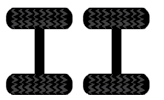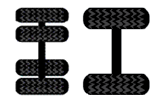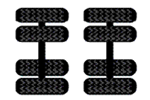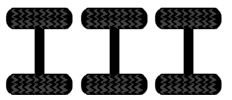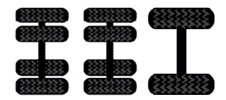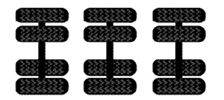New South Wales Class 3 Livestock Tri-axle Group Mass Limit Exemption Notice Operator's Guide
New South Wales Class 3 Livestock Tri-axle Group Mass Limit Exemption Notice Operator's Guide
National
Heavy
Vehicle
Regulator
The New South Wales Class 3 Heavy Vehicle Livestock Tri-Axle Group Mass Limit Exemption Notice 2024 (No.1) grants exemptions from mass requirements under the Heavy Vehicle (Mass, Dimension and Loading) National Regulation (MDL) for the tri-axle group on Class 3 heavy vehicles used for the transportation of livestock.
Note: The Notice provides an exemption from certain heavy vehicle mass limits outlined in the MDL for Class 3 vehicles operating in New South Wales.
This instrument does NOT exempt these vehicles from other requirements of the Heavy Vehicle National Law (HVNL), including, but not limited to, mass and other dimension requirements.
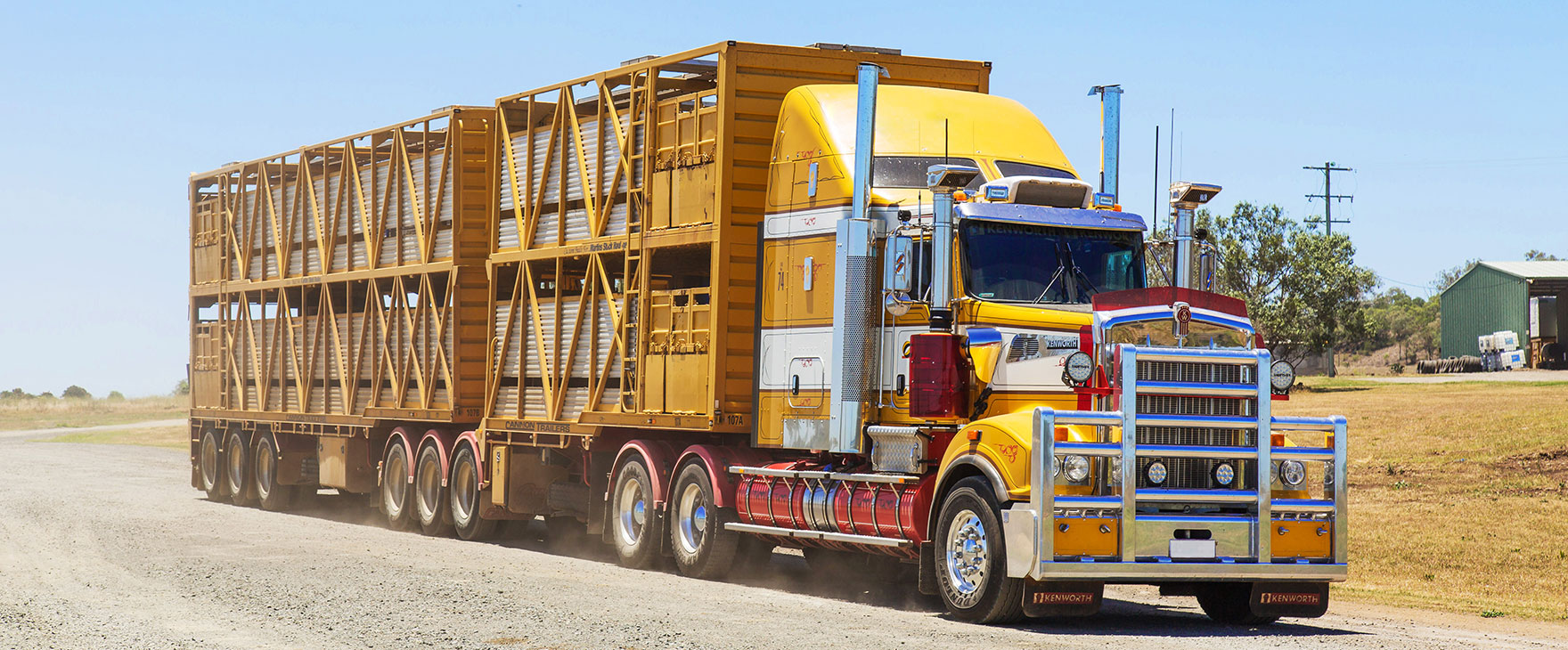
| Specifications | |
|---|---|
| Gazette Notice: | C2024G00070 |
| Starts: | 10 February 2024 |
| Expires: | 9 February 2029 |
| Vehicle types: | Class 3, prime mover towing a semitrailer combination, B-double, road train, B-triple |
| Exemptions: |
Mass requirements (axle mass limits, axle spacing mass limits, axle group mass limits) |
| Law: | HVNL, MDL |
| Coverage: | NSW |
| To be carried: | No |
- Overview
- Definitions
- Eligible
Vehicles - Conditions
- Network and
Mapping - Related
Notices - Resources
- Changes and
Updates
Overview
The information in this Operator’s Guide is intended to do two things:
- Explain how the New South Wales Class 3 Heavy Vehicle Livestock Tri-Axle Group Mass Limit Exemption Notice 2024 (No.1) (the Notice) operates, to assist in complying with it. It is important to remember this Operator’s Guide is instructional only and it is the Notice that provides the exemption or authorisation. If there is a difference or misunderstanding between the Operator’s Guide and the Notice, the Notice has priority and must be followed. The only exceptions are the requirements or conditions set out in the ‘Network and Mapping’ section explained below.
- Provide additional information referred to in the network requirements of the Notice. This includes links to network maps and other information such as vehicle, travel and road conditions. Networks and their conditions published in the ‘Network and Mapping’ section of this Operator’s Guide are not general advice and must be treated as conditions of the Notice.
Please read the Notice and this Operator’s Guide together. To download or print this guide, use the print or PDF buttons on the top right of this page.
About this Notice
This Notice assists with the mass limits for a tri-axle group of a Class 3 heavy vehicle that is an eligible vehicle and is used for the transportation of livestock.
Exemptions
These exemptions only apply to the extent to which conditions are granted.
Mass requirements
The Notice exempts eligible vehicles from the following mass requirements specified in Schedule 1 of the MDL:
- Part 2, Table 1 — Axle Tables - tri-axle group on a vehicle other than a pig trailer fitted with (c) single tyres with section widths of at least 375mm on some axles and dual tyres on the other axles.
Additional or conditional mass allowed under this Notice must not exceed manufacturer mass limits as outlined in section 8 of the MDL.
These exemptions only apply to a mass requirement where a conditional mass for a specified parameter has been provided in this Notice.
Note: Other mass and dimension limits in the MDL apply.
Definitions
The following are terms used in this Notice or conditions of operation. Unless otherwise stated, words and expressions used in this Notice have the same meaning as defined in the HVNL.
|
Term |
Definition |
|---|---|
|
Class 3 heavy vehicle |
A heavy vehicle is a Class 3 heavy vehicle if:
|
|
Eligible combination |
A heavy vehicle combination that is eligible to operate under this Notice as specified in section 8 of the Notice. |
|
General access |
Access to all roads in New South Wales, subject to road rules and the HVNL and restricted by the 'Specified road manager network requirements' in the Guide. |
| Livestock | Live cattle, sheep, pigs or goats. |
| Loading space | The dimension measured from the inside of the front wall or door to the inside of the rear wall or door of a semitrailer, with intervening partitions being disregarded. |
|
Prescribed mass requirement |
A mass requirement prescribed by the MDL. |
|
Road train |
A prime mover with a tandem drive axle group, two semi-trailers with tri-axle groups and a converter dolly with a tandem axle or tri-axle group, where the total length of the road train does not exceed 36.5 metres in length. |
|
Self Declaration Input Device (SDID) |
A device that allows the transport operator (or person acting on behalf of the operator, including the driver) to enter the total mass of the vehicle or combination and any other required information. |
Eligible vehicles
To be eligible to operate under the Notice, approved combinations must comply with the conditions of the Notice and all other requirements of the MDL.
An eligible vehicle must be one of the below combinations and be used to transport livestock:
- A prime mover with a tandem drive axle group and a semi-trailer with a tri-axle group, with single tyres with section widths of at least 375mm, or dual tyres, or a combination of those tyres, fitted on all axle groups, and a maximum length available for the carriage of animals not exceeding 12.5m.
- A B-double which consists of a prime mover with a tandem drive axle group and two semi-trailers with tri-axle groups, with single tyres with section widths of at least 375mm, or dual tyres, or a combination of those tyres, fitted on all axle groups, and a deck length available for the carriage of animals not exceeding 18.8m.
- A B-triple which consists of a prime mover with a tandem drive axle group and three semi-trailers with tri-axle groups, with single tyres with section widths of at least 375mm, or dual tyres, or a combination of those tyres, fitted on all axle groups, and a combined deck length available for the carriage of animals not exceeding 28.2m.
- A road train which consists of a prime mover with a tandem drive axle group, two semi-trailers with tri-axle groups and a converter dolly with a tandem axle or tri-axle group, with single tyres with section widths of at least 375mm, dual tyres, or a combination of those tyres fitted on all axle groups, and a deck length available for the carriage of animals not exceeding 25.0m.
| Eligible vehicle combination | Maximum loading length for the carriage of animals (m) | Maximum overall length (m) |
|---|---|---|
|
Prime mover towing a semitrailer with a tri-axle group
|
12.5 | 19.0 |
|
A B-double combination with tri-axle axle groups
|
18.8 | 19.0 |
|
A road train with tandem axle dolly
|
25.0 | 36.5 |
|
A road train with tri-axle dolly
|
25.0 | 36.5 |
|
B-triple
|
28.2 | 36.5 |
Conditions
Notices are subject to various conditions to ensure public safety, protect assets and prevent adverse impacts on the community, such as noise, emissions and traffic congestion. See the sections below for specific conditions related to this Notice.
Dimension conditions - Click to expand
Length
The total length of an eligible vehicle must not exceed the limits as shown in Table 1. An eligible vehicle is permitted to operate under this Notice when it is transporting livestock.
Mass conditions - Click to expand
Mass limits
Total combination mass
The loaded mass of an eligible vehicle must not exceed the general mass limits as:
- prescribed in Schedule 1 of the MDL.
- or any lower mass limits for a heavy vehicle in a Class 2 or Class 3 heavy vehicle authorisation notice.
The total mass of an eligible vehicle must not exceed the lowest of the following:
- the sum of the axle and axle group mass limits in Table 2, or
- the Gross Combination Mass (GCM) limit specified by the prime mover manufacturer, or
- the sum of the Gross Vehicle Masses (GVMs) for the prime mover and the trailer or trailers it is towing.
Axle mass limits
The mass on a tri-axle group of a semi-trailer must not exceed 21.0t.
Table 2 below shows the maximum tandem axle and tri-axle mass for an eligible vehicle to operate in New South Wales.
The maximum mass must not exceed the limits specified by the prime mover manufacturer.
| Axle group | Axle/tyres | Certified Road Friendly Suspension (RFS) | Mass limit (t) | ||
|---|---|---|---|---|---|
| Tandem axle group (non-steer) |
Single tyres on all axles
|
Single tyres on one axle and dual tyres on the other axle
|
Dual tyres on all axles
|
Not fitted with RFS |
16.5 |
| Fitted with RFS | 17.0 | ||||
| Tri-axle group |
Single tyres on all axles
|
Combination of single and dual tyres
|
Dual tyres on all axles
|
Tri-axle group not fitted with RFS (converter dollies only) | 17.0 |
| Tri-axle group fitted with RFS (converter dollies only) | 21.0 | ||||
| Tri-axle group not fitted RFS | 20.0 | ||||
| Tri-axle group fitted with RFS | 21.0 | ||||
|
|||||
General conditions - Click to expand
Transportation of livestock only
An eligible vehicle combination must be used for the transportation of livestock to be defined as an eligible vehicle under the Notice. The load must be entirely composed of livestock. No other type of load may be transported. Eligible vehicles must comply with conditions relating to routes and networks under ‘Network and mapping’ section of this Guide.
Vehicle requirements
Eligible vehicles must meet the requirements listed in Table 3.
The table is divided by:
- combination,
- axle and axle group,
- tyres.
| Prime mover | Semitrailer(s) | B-double | Road train | B-triple | Tyres |
|---|---|---|---|---|---|
|
Tandem axle drive group |
Tri-axle group(s) and a maximum length available for the carriage of animals not exceeding 12.5m |
Must not exceed 19.0m in length with a deck length available for the carriage of animals not exceeding 18.8m |
Tandem axle or tri-axle on the converter dolly; a deck length available for the carriage of animals not exceeding 25.0m |
Combined deck length available for carriage of animals not exceeding 28.2m |
Single tyres minimum with 375mm or dual tyres or a combination of both on all axle groups |
Other conditions and additional information
Assessing routes
Before an eligible vehicle is driven along any route, its driver and operator must be satisfied that the route has been assessed and that the vehicle can be driven along it without:
- disrupting telecommunication, electricity, rail, gas, water or sewage services; or
- damaging a road (including a bridge), structure, rail crossing or tree.
Third party approvals
Gazette notices, permits and some jurisdictional laws may require third parties and other entities to provide permission for a vehicle to travel if it exceeds certain mass or dimension limits.
Operators must secure all approvals from third parties such as electricity/utility companies, rail authorities and other third parties as part of their heavy vehicle operations.
For more information, visit the Third party approvals page.
Loading requirements
To meet the loading requirements, the heavy vehicle must be loaded:
- in a way that load placement does not make the heavy vehicle unsafe or unstable
- in a way that the load is not likely to fall or be dislodged from the vehicle
- using an appropriate system to restrain the load.
Visit the NHVR loading page for more information on load requirements.
Complying with the HVNL
Unless otherwise exempted by the Notice or this Operator's Guide, operators must ensure their vehicle or combination complies with the:
- Australian Design Rules (ADRs); and,
- Heavy Vehicle National Law (HVNL); and,
- Heavy Vehicle (Mass, Dimension and Loading) National Regulation (MDL); and,
- Heavy Vehicle (Vehicle Standards) National Regulation (VS Regulation).
Using or permitting another person to use a defective heavy vehicle or a heavy vehicle with unapproved modifications on a road may be an offence.
Failure to comply may result in the driver and/or operator being liable for an offence. Penalties can include infringement notices or prosecution.
Chain of Responsibility (CoR)
Under the HVNL, every party in the Chain of Responsibility (CoR) has a positive duty to ensure the safety of their activities in relation to a heavy vehicle. This duty, known as the “primary duty”, applies to the scheduling, loading and consigning of a vehicle, as well as to its operation on a road.
Safety is broader than the safety of drivers and other road users. It also includes protection of road infrastructure, preventing damage to other vehicles or property, and minimising environmental harm. Substantial penalties may be imposed upon parties who breach this obligation and upon their executives.
For more information on your CoR obligations visit Chain of Responsibility on the NHVR website.
Our Regulatory Advice offers guidance, tips and tools for managing a range of heavy vehicle safety risks.
Warning signs
Eligible combinations longer than 22m but not longer than 30m must display a long vehicle warning sign at the vehicle's rear (as shown in Figure 1).
Eligible combinations longer than 30m must display a road train warning sign at the front and rear of the combination (as shown in Figure 2).
Warning sign requirements are described in the NHVR's Vehicle Standards Guide (VSG-19).
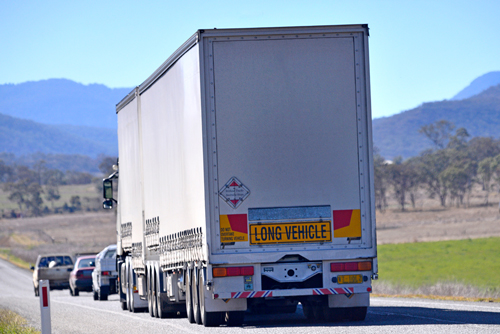
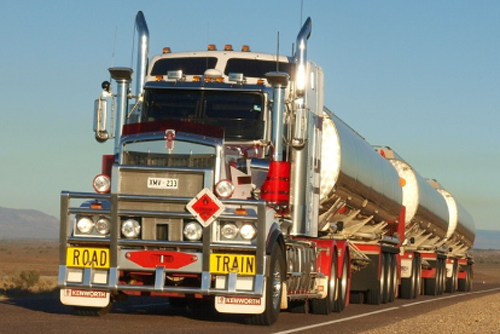
The requirement to carry the Notice
Drivers do not need to carry a copy of the Notice.
Network and mapping
For the purposes of s121 of the HVNL, an area or route specified in the 'Network & Mapping' section of this Operator's Guide is a stated area or route to which this Notice applies. In addition to complying with the conditions stated in this Operator's Guide, operators must ensure compliance with the specific road manager access requirements set out below or in network maps.
In this tab, you will find the approved routes authorised under the Notice. There may also be network conditions pursuant to the stated areas and routes under the Notice. Network conditions relate to road and travel conditions that are not contained within the Notice.
National Network Map
This Notice may refer to state or territory government websites for the publication of networks. From 20 December 2023, certain authorised heavy vehicle road network maps for the Australian Capital Territory, New South Wales, Queensland, South Australia, and Victoria are published by the National Heavy Vehicle Regulator, through the NHVR National Network Map. Additional information and guidance can be found on the National Network Map webpage.
Approved routes covered by the Notice
The following routes are approved for travel for vehicles eligible under this Notice.
Approved routes covered by the Notice - Click to expand
| Eligible vehicle | Approved network or route |
|---|---|
|
Prime mover combination up to 19.0m in length |
New South Wales 19 metre B-double (over 50.0 tonnes) network |
|
B-double up to 19.0m in length |
New South Wales 19 metre B-double (over 50.0 tonnes) network |
|
Road train with a tandem or tri-axle dolly up to 36.5 metres in length |
GML & CML Type 1 A-double network |
|
B-triple road trains up to 36.5 metres in length |
GML & CML B-triple network |
Specified road manager network requirements
The following section outlines specific road manager route requirements under the Notice, including route conditions and restrictions.
Road manager route requirements in this section may change from time to time and should be reviewed regularly to ensure compliance.
For further information on how to comply with a requirement, please contact the relevant road manager.
Road managers may publish specific route conditions and restrictions on the approved network map. These must be complied with in addition to any route requirements outlined in this Operator's Guide. If a condition listed in any section of this Operator's Guide conflicts with a route condition or restriction published on an approved network map, the more restrictive requirement applies.
New South Wales network conditions - Click to expand
Intelligent Access Program conditions
B-triples may only operate under the Notice in New South Wales if they are enrolled in the following intelligent access system as covered in chapter 7 of the HVNL:
- Telematics Monitoring Application (TMA) with Transport Certification Australia (TCA); or
- Intelligent Access Program (IAP).
B-triples must also comply with IAP when operating at HML, the operator must comply with all of the conditions set out in section 10 of New South Wales Higher Mass Limits Declaration 2025 (No.1):
- the vehicle configuration;
- the number of axles in the configuration; and
- the total mass of the vehicle or combination, including the mass of the hauling unit, any attached trailers, and any load on board the vehicle or combination.
This information must be declared at the following times:
- at the start of the journey;
- whenever there is a change in the vehicle configuration;
- whenever there is a change in the total mass of the vehicle or combination, including the mass of the hauling unit and any attached trailers, plus any load on board the vehicle or combination; and
- whenever prompted by the Self Declaration Input Device (SDID), if a SDID is available in the vehicle.
Mass declaration requirements must be made through:
- the SDID in the vehicle that is certified by TCA and linked to the IAP service provider; or
- an alternative method approved and certified by TCA.
Eligible vehicles operating on the New South Wales Farm Gate Network must be enrolled in Road Infrastructure Management (RIM)
Non-participating road managers
Under the Notice, the following road managers are non-participating road managers for all vehicles and combinations.
Access to state roads on the approved nominated networks in non-participating council areas is allowed, subject to Notice and network conditions.
Operators can apply for access to local roads in non-participating council areas by submitting a permit application through NHVR Go.
Traffic advisory services - Click to expand
Prior to commencing any journey, operators should review traffic alerts, road closures, travel delays, and other traffic advisory information for participating jurisdictions.
Table 5 provides details and links to official traffic advisory services for each participating jurisdiction. For more information about a particular service, contact the relevant jurisdiction or department via the contact details listed on the service webpage.
|
Jurisdiction |
Website |
Purpose |
|---|---|---|
|
New South Wales |
View live information about incidents and changes in New South Wales traffic conditions. |
Applying for a permit - Click to expand
Access permit applications are required for heavy vehicles that don’t comply with the conditions set out in a notice and when accessing routes that aren’t covered on an approved network.
The following pages provide useful information and resources for submitting access permit applications:
- Do I need a permit?: Information and resources for determining whether a road access permit, or a Notice is required to operate on Australian roads.
- Access permit application process: Information, resources, and instructions for submitting a valid access permit application.
Related notices
In this tab, you will find a list of national, state and territory notices related to the New South Wales Class 3 Livestock Transportation Exemption Notice 2024 (No.1).
A related notice may be comparable with this Notice or provide alternatives for operators to find the appropriate notice under which to operate.
Related national notices
| Jurisdiction | Notice |
|---|---|
| National |
National Class 2 Heavy Vehicle 4.6m High Livestock Carrier Authorisation Notice 2025 (No.1) Authorises the use of Livestock Carriers from 4.3 to 4.6 metres in height in stated areas or stated routes, during stated hours of stated days and to state the conditions under which these Livestock Carriers may be used. |
Related state and territory notices
| Jurisdiction | Notice |
|---|---|
| New South Wales |
New South Wales Class 3 Livestock Transportation Exemption Notice 2024 (No.1) Provides mass exemptions that support the New South Wales Livestock Loading Scheme. This Notice works with the New South Wales Livestock Loading Scheme, and gives effect to the exemptions and conditions of that scheme. Compliance with the scheme is a condition of this Notice. New South Wales Higher Mass Limits Declaration 2025 (No.1) Authorises the use of certain categories of heavy vehicles under higher mass limits on stated areas and routes and states the intelligent access conditions under which these heavy vehicles may be used. Please note the following supporting document for this Notice: |
| New South Wales and Victoria |
Exempts semitrailers used to carry livestock from the limit on the deck length available for the carriage of animals stated in section 4(6) of Schedule 6 of the Heavy Vehicle (Mass, Dimension and Loading) National Regulation. |
| Queensland |
Queensland Class 2 Rockhampton Road Train Authorisation Notice 2025 (No.1) Authorises access for Class 2 heavy vehicles that are Type 1 road trains transporting cattle to Rockhampton abattoirs. Queensland Class 3 Livestock Loading Exemption Notice 2024 (No.1) Provides mass dimension exemptions that support the Queensland Livestock Loading Scheme. This Notice is intended to work with the Queensland Livestock Loading Scheme, and compliance with that Scheme is a condition of exemptions contained in this Notice. Queensland Class 3 Rockhampton Road Train Mass Exemption Notice 2024 (No.1) Grants exemptions from mass requirements for Class 3 heavy vehicles that are Type 1 road trains operating under the Queensland Livestock Loading Scheme transporting cattle to abattoirs in Rockhampton. Please note the following supporting document for this Notice: |
| South Australia |
South Australia Class 3 Livestock Transportation Exemption Notice 2023 (No.1) Exempts the use of Class 3 combinations from stated mass limits in Schedule 1 of the Heavy Vehicle (Mass, Dimension and Loading) National Regulation and allows for a specific length exemption for specific 27.5m B-Doubles carrying livestock on a specific route. Please note supporting information for this notice can be found on the SA Government - Transport of livestock webpage. |
| Tasmania |
Tasmania Class 3 Livestock Transportation Exemption Notice 2024 (No.1) Provides mass and dimension exemptions that support the Tasmanian Livestock Loading Scheme. This Notice is intended to work with the Tasmanian Livestock Loading Scheme, and compliance with the scheme is a condition of this Notice. Please note the following supporting documents for this notice:
|
| Victoria |
Victoria Class 3 Livestock Carrier Mass Exemption Notice 2024 (No.1) Exempts livestock carriers from certain mass requirements. |
Resources
All information about this Notice is contained in this Operator’s Guide. Please refer to the tabs for more information about these Notices, or contact us with your specific questions.
Note: If you have any feedback on the information provided please contact us at info@nhvr.gov.au
Participating jurisdiction heavy vehicle resources
For more information about operating a heavy vehicle in participating jurisdictions, refer to the following sites:
- New South Wales: Transport for New South Wales (TfNSW) - Heavy vehicles
Changes and updates
| Date | Summary | Links to resources and communications |
|---|---|---|
| 10 February 2024 | New South Wales Class 3 Heavy Vehicle Livestock Tri-Axle Group Mass Limit Exemption Notice 2024 (No.1) commenced revoking the New South Wales Class 3 Heavy Vehicle Livestock Tri-Axle Group Mass Limit Exemption Notice 2019 (No.1). | C2024G00070 |
| 10 February 2019 | New South Wales Class 3 Heavy Vehicle Livestock Tri-Axle Group Mass Limit Exemption Notice 2019 (No.1) commenced and replaced New South Wales Class 3 Heavy Vehicle Livestock Tri-Axle Group Mass Limit Exemption (Notice) 2014 (No. 1). | C2019G00073 |
| 6 February 2014 | New South Wales Consolidated National Heavy Vehicle Mass and Dimension Exemption Notice 2014 (No.1) commenced including the New South Wales Class 3 Heavy Vehicle Livestock Tri-axle Group Mass Limit Exemption (Notice) 2014 (No. 1) in Schedule 3. | C2014G00241 |

www.nhvr.gov.au
E info@nhvr.gov.au
P 13 NHVR (136 487)
PO Box 492, Fortitude Valley QLD 4006
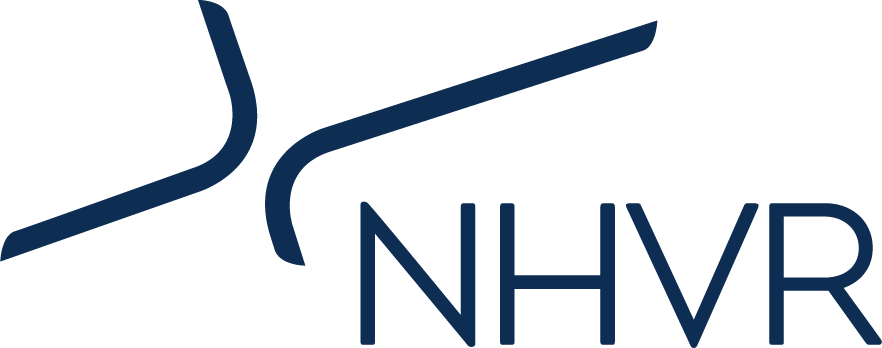
 Accessibility tools
Accessibility tools






